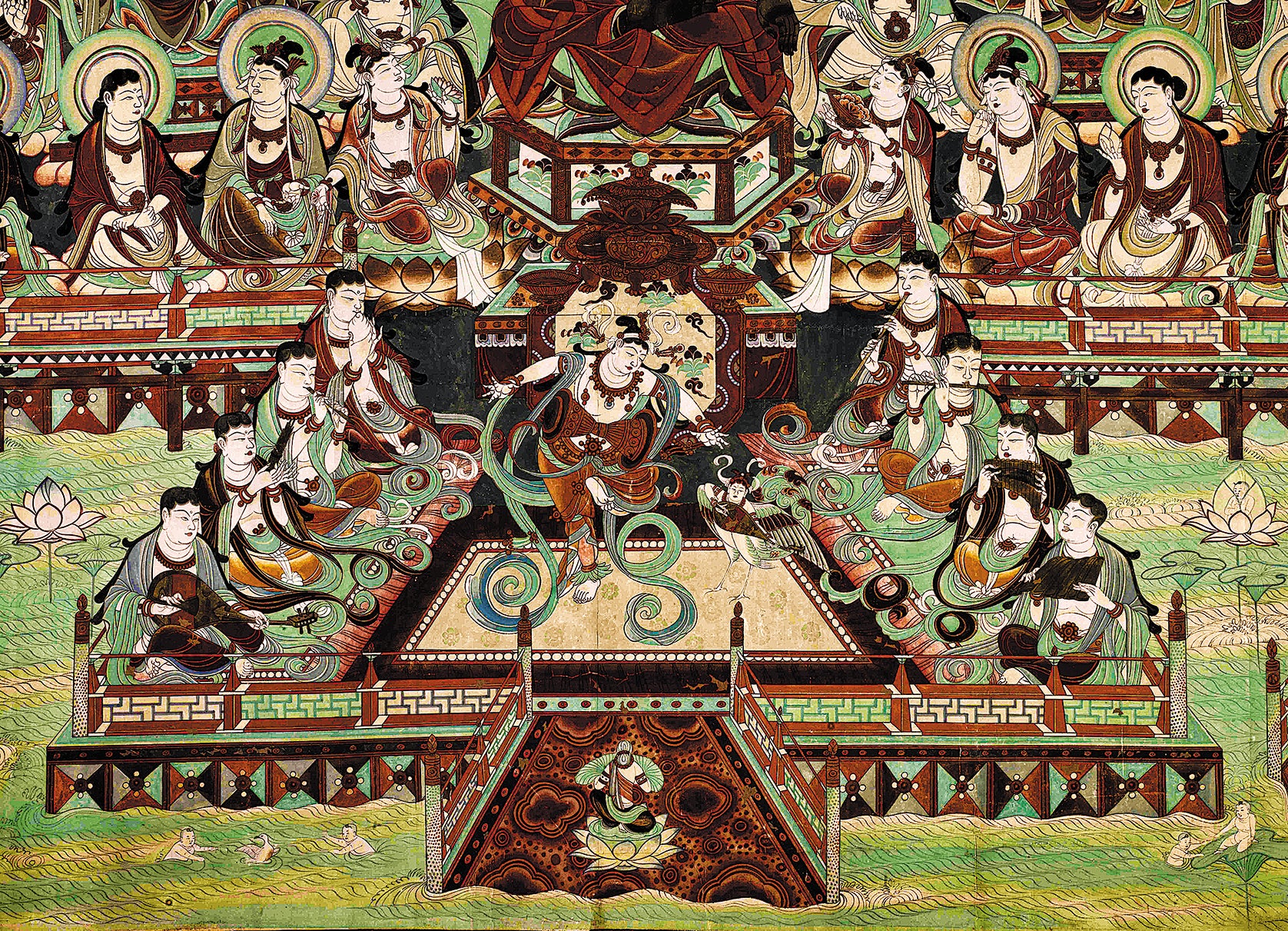Tuning in to history
THE ARTICLES ON THESE PAGES ARE PRODUCED BY CHINA DAILY, WHICH TAKES SOLE RESPONSIBILITY FOR THE CONTENTS

When Zheng Ruzhong, a music teacher, visited the Mogao Caves in Gansu province in 1986 he was amazed by the numerous murals of the pipa, a four-stringed Chinese lute. More than 600 images of the ancient Chinese instrument, in hundreds of caves, were portrayed in the complex of grottoes adorned with Buddhist frescoes, which in the year following Mr Ruzhong’s visit would be listed as a UNESCO World Heritage Site.
Ever since, Zheng has dedicated himself to the research of music and dance in relation to the Mogao Caves, but he also took on a special project transforming the painted musical instruments, portrayed in the murals, into real ones.
In total, 245 items from the 97 types of musical instruments have been made based on the images depicted in the Mogao murals, including plucked and bowed stringed instruments, as well as percussion items. However, this is still a very small number of the musical instruments depicted in the frescoes, which, according to Mr Ruzhong’s research, totals more than 4,000.
“There are no other such caves in the world that have as many musical instruments painted in the murals,” said Mr Ruzhong, 88, who set up a music and dance studio with the Dunhuang Academy in 1986. “It reveals a rich musical landscape in ancient China.”
The Mogao Caves are carved into cliffs on the edge of the Gobi Desert at Dunhuang, a trade hub on the historic Silk Road. Many of the murals record exchanges between the east and the west. Most of the musical instruments depicted in the murals have never been seen or even recorded in other forms. This creates a huge challenge to artists who want to reproduce them.
“Painters portrayed the appearance and didn’t explain how they made sounds,” said Ma Chenghu from Lanzhou, Gansu, who leads a team attempting to make these musical instruments a reality. “That’s the biggest difficulty when reproducing these painted musical instruments as real objects.”
Of the 245 musical instruments, only one remains unplayable to musicians – a curved lute with one string. Zheng has recorded 20 instances of the lute appearing in murals painted across different dynasties. He could not find any other information about it except for what is shown in the murals at the Mogao Caves, which were built by Buddhist worshippers between the 4th and 14th centuries.
“I think it was created by painters,” Zheng said. “It never existed in real life.”
Bands of musicians playing different instruments are also illustrated in the murals. Among them, the most-seen instrument is the pipa, depicted as having more than 600 shapes, Mr Ruzhong said.
In the 1980s Zheng and his team counted each individual image of a musical instrument that appears in 492 caves to get accurate figures, taking photos of them as they went. They found that the pipa was the most painted.
“Since the Han Dynasty [206 B.C.-A.D. 220], the pipa has been a symbol of music in China,” Zheng said. “Painting it means painting the music scene.”
Ma’s team has produced 44 kinds of pipa based on Zheng’s research. It took them almost half of 2018 to replicate these selected instruments from the murals. The team travelled to many cities to find luthiers talented and skilful enough to reproduce these ancient instruments, which were shown to the public at the 2018 Silk Road (Dunhuang) International Culture Expo, and musicians playing them drew huge audiences.
In 2019 these instruments were played by musicians from the Shanghai Conservatory of Music while they were performing at the Chinese New Year’s Concert held in Vienna.
Previously published on Chinadaily.com.cn
Subscribe to Independent Premium to bookmark this article
Want to bookmark your favourite articles and stories to read or reference later? Start your Independent Premium subscription today.